Leaderboard
Popular Content
Showing content with the highest reputation on 11/05/2024 in all areas
-
On Sunday, for the first time in my life, I witnessed these rays emanating from the dawning sun. At 6:00 am, driving across the Seto Ohashi road/rail bridge, the sun was about to rise over eastern Shikoku, and orange spokes splayed out against a dark blue background.4 points
-
3 points
-
2 points
-
2 points
-
Thanks, it's indeed a very interesting take on the subject 🙏 I think I understand how "damaging" iaïdo practice is seen. And I honestly did not think it would be viewed this way. Sure I know it's not going to do any good, but to me it would almost be insignificant. Like you would not be able to tell with your naked eye. But again, I can be wrong, and I can totally accept it and even reconsider my intent of using my nihonto for iaï... (Getting it back Saturday so that was some thinking ahead here...). I'd like to add, related to the "why", that a good analogy I think is why millions of people go to museums to see art in person... I mean, take da Vinci's Mona Lisa for instance. Why do so many people want to see the real thing when you have thousands of pictures of it online, in books, etc. What's the point then???? Well, because there is spiritual connection, feelings and emotions going through your body, it transports you... Exact same thing with using a koto blade I think... At least to me. But again, I might reconsider it, really.2 points
-
It is very interesting to compare my different interests on this point. The most relevant comparison is violins. In fact, there is a violin equivalent of NMB--maestronet.com--a similar forum devoted to violins. While violins have only existed for about 500 years, the value of the finest examples far exceeds any nihonto in existence. Arguably, the cultural significance of either item is about the same. The difference is that no one tells a violinist with their exquisite 1706 Stradivari that they should put it in a case and never play music on it. Even though playing on a violin can cause damage, there are highly-skilled luthiers who can repair these instruments and keep them alive. There are some fabulous old violins in museums, but even then they are sometimes lent to great players to perform on (https://www.youtube....EBA5EA4076B&index=34). No one would say to a violinist that they should only play violins made recently; in fact my Magnus Anton Fichtl from 1775 gets a couple of hours of workout every day. While iaido, with the repeated drawing and sheathing, can damage a blade, I believe that even suburi would be considered out-of-line here. I suspect the difference is that the actual intended use of nihonto, which is to say life-taking and life-giving, is no longer a living tradition. Still, I would urge you all to give Nicholas a bit of a break here. He makes a reasonable inquiry.2 points
-
Спасибо Pol и участникам этой ветки за ответы. Этот gunto будет первым в моей небольшой коллекции и будет моей точкой отсчета. Мое мнение таково, что лучше иметь оригинал в любом состоянии, чем хорошую подделку(реплику). С наилучшими пожеланиями, Виталий2 points
-
Learned to do Ten zogan what is cool but my relief engraving needs more practice. Only one of the dot inlays is gold the others are silver and I’m not sure if it is possible to see which one without the piece in hand because of the reflections. The crane Tsuba still feels unfinished but got some golden eyes. Edit: I said some parts of this Tsuba have some personal value but a friend wanted the Tsuba without the personality so I changed a few things on this…2 points
-
I recently bought to Type 98s, both from reputable antique shops. The first one is signed, but looks like it was made from billet steel. It came with papers to it, what might be original tassel and a second tsuba. However, it lacks the original locking mechanism and when I disassembled it, one of the bottom seppa was stuck so hard I could not get the tsuba removed.1 point
-
As a Koto collector who owned a sword that had been used to cut mats before, the damage is more severe then you think I had bought this sword, taken a good look at it, and only realized at home, it was covered in very small and sometimes minor scratches. But also some damage to the cutting edge, maybe 1/4 of MM. But this pained me to look at, the blade was early Koto, and extremely beautiful, even papered. Please never use these swords as a cutting instrument, it makes future collectors like me very sad and lowers the value of the blade significantly. Greetings, Lex1 point
-
I love the spirit and intent in this. We often talk about keeping our swords "as is" because it is in line with the life of the sword. If one really feels that way, then I compare our storing our swords in boxes to caging lions and tigers in cages. I love to see guys with restored vintage cars out on the weekend for a drive. They don't drive them everyday, and when they do get them out, it is done carefully, no hot-rodding. It keeps the car alive. They shouldn't be stored in a huge garage, never to roll again. I also respect those who fear the damage that may happen to a blade, which is why the 1704 violin or the 1934 Chevy is used by experienced people, very carefully. 2 cents1 point
-
If this is a repetitive question here I understand there might be some built up frustration coming out here. Otherwise I think the question was asked in a good manner. And from someone who has spent a considerable amount of his life developing his sword skills. There are a lot of people out there who will ask nobody before they use Nihonto for backyard cutting until the sword looks like an old rusty saw. I myself have cut tatami with a koto blade, but that was in Japan and not on my own initiative. I wouldn't dream of doing it outside of Japan. My position is that we have to keep in mind that we are only the caretakers of these historic swords for a while before they continue down the history. Our lives are just a blip in the history of the sword, and if every blip wants a piece of the sword, it won't last very long. For each generation of users, the finite pool of antique katans gets even smaller. In the future, prestine katanas will be very rare. By using this katana, you are not doing your best to preserve it for future generations. Previous owners throughout history did not take this well care of their swords and pass it on until it reached us, so we can start putting miles on them. There is something beutifully humble about viewing yourself as the caretaker and not the end user of a sword. I'd still say that after 15 years of Iai you probably have the skills to not do much damage, but I'd rather not anyway. For the Japanese the blades serve ritualistic and even religious purposes. They are believed to expel evil and protect the house from bad spirits. Maybe adopting a similar mindset and start viewing it as your lucky charm will make it feel more like it has a purpose?1 point
-
1 point
-
I have been collecting nihonto for over 20 years, and I've always been one to transfer them from their shirosaya to the koshirae once I receive them, and I never keep them oiled either, with no ill effect. Some of my swords have been in their koshirae for over 20 years on my sword rack, unoiled, without developing any rust. And until this year, I lived in a city where the humidity in my house was about 50%. I prefer to keep my swords in their koshirae because I like the feel of how a sword was intended to be handled, in koshirae. And also, I have an unfounded phobia of my hand slipping on the shirosaya handle, and my hand getting cut, so a tsuba is always nice to have. So now I have a huge stack of shirosaya over the years that I really need to get sorted and tagged, ha ha. Maybe it's also because most of my swords are TH and below, and not Juyo or TJ, so I'm not as concerned with keeping them in absolutely pristine condition.1 point
-
1 point
-
Participating in the damaging of an antique Japanese sword, is not the way to show your respects to Japanese swordsmanship or culture. Quite the opposite. In my opinion, it's simple as that. -Sam1 point
-
I talked to him about it on Friday. He is quite proud of the accomplishment of writing a book some others passed on writing. It sounded like a labor of love. I am not sure what you mean @lonely panet, Tsuruta-san and AOI Art have always dealt with me honorably.1 point
-
Your sword, you can do what you want with it. But if you are asking for advice from a forum dedicated to the preservation of Japanese swords...a tradition over 1000 years old, we would ask what you gain from increased risk?1 point
-
You are a Lucky Man Piers. Congratulations. Wish I might be that lucky some day. MikeR Thank you for sharing1 point
-
For what it's worth, I have been practicing iaïdo with a steel blade for almost 15 years, stored of course in its koshirae, and it's absolutely like new... It's always oiled and taken care of since I use it weekly for training though. Also I have read that some folks here do not even oil their blades. I guess it really depends on how bad humidity is in your country/area ? 🤔 So I don't really understand why koshirae would be worse than shirasaya? (genuinely asking!)1 point
-
Emil, it is probably less wear on the blades to lay them out 'naked' than to un-sheath and re-sheath them a dozen times a day for the customers. This would also damage the KOSHIRAE if not done very carefully. If the blades are wiped and oiled once a week, they should be fine.1 point
-
On the top right hand corner it says 'Pray for continued luck in the fortunes of war' (ino būnchōkyū 祈武運長久), and below that is the recipient's name 'Hayashi Chiyoji' (林千代治). The characters emanating from the rising sun are the names of those who signed it, to pray for Hayashi-san's continued luck in the fortunes of war. These are most likely people from his hometown - there are many people with the surnames Seiyama (清山), Hayagawa (早川), Nishio (西尾), and Hayashi (林) [presumably Hayashi-san's his own family members].1 point
-
One potential explanation is that someone who owned the tsuba wanted to convert it into a paperweight (bunchin 文鎮), and added lead to the kogai-ana, and brass to the nakago-ana to make it more functional (for their intended purpose)1 point
-
I think that the tsuba would most likely be attributed to a swordsmith (tōshō 刀匠) and that the design is intended to replicate the windows of a Japanese teahouse (chashitsu 茶室)1 point
-
ALL Japanese Swords on StCroixBlades.com site ON SALE starting now! https://stcroixblade...hop/Japanese-swords/ Additional Japanese Swords ON SALE in St. Croix Blades' eBay Store! (you don't need to be an eBay member to purchase--just Contact St. Croix Blades on our site, or by emailing info@stcroixblades.com, or calling/texting 715-557-1688). https://www.ebay.com...ificSeller=1&_sop=16 If you have any questions, let me know. Sincerely, Matthew Brice St. Croix Blades1 point
-
A blade should rest in its SHIRA-SAYA, KOSHIRAE will suffer from oxygen and UV rays in the long range. So an air-tight case would be better for the latter in case it was a good one. Sometimes a cheap IAI-TO can be sufficient as decoration.1 point
-
1 point
-
I would strongly suggest that he display the koshirae with the tsunagi and keep the blade in its shirasaya. It should be fine to keep it displayed like that indefinitely.1 point
-
Fujiwara ju Yasumitsu. Fujiwara ju (藤原住) is indeed quite unusual to see in a mei but there are a few cases. https://nihontoclub.com/view/smiths/meisearch?type=All&mei_op=contains&mei=藤原住1 point
-
1 point
-
It has a decent size and shape, and it is not at all simple or boring and does not need any embellishment to be a nice TSUBA. "Old" does not mean anything - only quality counts!1 point
-
入籍番號 – Registration number 氏名 – Name 支給年月 – Date of supply 寸法及製作年度 – Size and manufacturing fiscal year (三)十九年度 – Size 3, FY1944 上海海軍衣糧廠 – Shanghai navy clothing factory1 point
-
1 point
-
I finally put the finishing touches on my display. It serves as both a display and a safe, which is close to air tight; the glass is clamped to the frame via magnets so it is removeable. The inside is lined with Aspen, and the fabric is vintage Japanese silk. I installed the light bar and a hygrometer. I also carved katanakake inserts for storing in shirasaya in the summer months when I'm away.1 point
-
Dear all, I am happy to report that the Sado island tsuba arrived safe and sound. To mirror Marius´s words: in person, the tsuba is ven more of a joy to behold and very pleasing to eye and hand. John has been a pleasure to deal with. This purchase has been one of my most pleasureable experiences in my time collecting. Best, Danny1 point
-
1 point
-
1 point
-
That's the one! And that's me at my wedding, showing it to my uncle, who had previously thought the sword was lost. It is gratifying to keep it in the family, and I intend to pass it down. Hopefully it sparks an interest in Nihonto for the next generation, like it did for me. I am enjoying reading everyone's answers! Cheers, -Sam1 point
-
Thank you @Toryu2020! I do really need to attend those sessions. I read and save all the NCJSC newsletters and kantei emails, and also have Markus Seskos koto kantei book and supplement. The tricky part is getting all that knowledge and information to stick . I’m sure the zoom meeting would help a lot. Thanks again and hopefully see you soon on the zoom kantei, -Sam1 point
-
I’ve had the same issue with Border Force. A 2.5 shaku sword made by Japanese smith Kanehisa in 2017 in Gifu prefecture and sold to me by Tozando Sword Shop in Kyoto. A similarly long and convoluted story with BF refusing to believe the sword was made by traditional methods despite the Tozando giving credence to the idea. I pulled out of the court appearance due to the risk of £2500 costs. I used to be a magistrate and this figure seems at odds with anything we order whilst on the bench. A letter followed saying I could no longer appeal and the sword’s seizure ( they didn’t say that forfeiture was part of withdrawing from a tribunal) would it would be destroyed. Then I received and email saying a further review of my case would be carried out and I should supply more evidence if I have any, by 23/10/24. I obtained a letter from the swordsmith’s son (the original smith as since died) saying his father made the sword, he was his father’s apprentice, and it was made by traditional methods by hand (one of BF’s own exemptions from seizure). A well respected British antique sword dealer very kindly agreed to supply a letter stating the career history of Kanehisa, the prizes he’d won for his work and that he only made swords traditionally and by hand. I also showed them my membership of the British Kendo Association’s Iaido bu, my grade and evidence of third party liability insurance and that I was going to used the sword for swordsmanship training (another of BF’s criteria for import seizure exemption). Thus, I presented two of their criteria for the sword’s release to me. The review arrived yesterday and are going the release the sword to me (assuming it hasn’t been destroyed as they said they would) and I’m really happy about that and I’m pleased with BF’s considered and full review. It seems some in BF simply do not listen to the circumstance of one’s case. Their minds are set after seizure and the even say they rarely change their decisions. I had to jump through hoops to obtain the required evidence but constantly feared they’d say, ‘we don’t believe your evidence’. I would’ve taken this to court had the review decision gone the other way since I feel a set of three magistrates would see the illogical behaviour of BF and see in my favour. I was willing to lose £2500 to have my day in court and I was carefully crafting my court deposition using the C.R.A.C method. I’m pleased it didn’t come to that and BF saw the error of their ways in my favour. Incidentally, BF will not accept the argument that the sword is an ‘objet d’art’ or a collectors item that was one of my mistakes and I think the OP’s.1 point
-
Initial search on Wikipedia Page: "The Rising Sun Flag (旭日旗, Kyokujitsu-ki) is a Japanese flag that consists of a red disc and sixteen red rays emanating from the disc.[1] Like the Japanese national flag, the Rising Sun Flag symbolizes the sun. The flag was originally used by feudal warlords in Japan during the Edo period (1603–1868 CE).[2] On May 15, 1870, as a policy of the Meiji government, it was adopted as the war flag of the Imperial Japanese Army, and on October 7, 1889, it was adopted as the naval ensign of the Imperial Japanese Navy.[3]" "The flag of Japan and the symbolism of the rising Sun has held symbolic meaning in Japan since the Asuka period (538–710 CE). The Japanese archipelago is east of the Asian mainland, and is thus where the Sun "rises". In 607 CE, an official correspondence that began with "from the Emperor of the rising sun" was sent to Chinese Emperor Yang of Sui.[8] Japan is often referred to as "the land of the rising sun".[9] In the 12th century work The Tale of the Heike, it was written that different samurai carried drawings of the Sun on their fans.[10] The Japanese word for Japan is 日本, which is pronounced 'Nihon' or 'Nippon', and literally means "the origin of the sun". The character nichi (日) means "sun" or "day"; hon (本) means "base" or "origin".[11] The compound therefore means "origin of the sun" and is the source of the popular Western epithet "Land of the Rising Sun".[12] The red disc symbolizes the Sun and the red lines are light rays shining from the rising sun." "The Rising Sun Flag was historically used by the daimyō (大名) and Japan's military, particularly the Imperial Japanese Army and the Imperial Japanese Navy. The ensign, known in Japanese as the Jyūrokujō-Kyokujitsu-ki (十六条旭日旗), was first adopted as the war flag on May 15, 1870, and was used until the end of World War II in 1945. It was re-adopted on June 30, 1954, and is now used by the Japan Maritime Self-Defense Force (JMSDF). The Japan Self-Defense Forces (JSDF) and Japan Ground Self-Defense Force (JGSDF) use a variation of the Rising Sun Flag with red, white and gold colors.[20]" Haven't seen anything yet about sword use.1 point
-
I thought that was the reason for the shortened bohi. Break the tip and form a new kissaki.0 points
-
You are misinformed on this point. In blind tests with modern violins and fabulous old Cremonese violins, generally the new instruments win the comparisons. My bow, made by a major living archetier, is the equal or better of any old bow. Some old violins are over-repaired and too rickety for performance, although their sound/playability is not a factor in their value. People like old violins much like they like old swords. Time gives them soul, whatever that is. But in a practical sense there is no difference, and I would say that, without question, playing an old violin is no disrespect to it. I believe that it's only that playing a violin is very much a living tradition, while beheading your enemies is not.0 points
-
0 points
-
Hi everyone, Just wanted to share my thoughts, and confront them with y’all, on what I think is a touchy subject 😃 I bought my first and only nihonto 2.5 years ago, and it will probably remain the only one I’ve got for a while. The reason is that I had not the intention of collecting, but more to get the most authentic piece of Japanese sword I could, meaning a nihonto, preferably koto, from the Muromachi era which I find fascinating. I was able to find one within my budget, but unfortunately the koshirae left a lot to be desired. While the tosogu was really nice, saya was definitely subpar, of poor quality and not even fitting the blade properly. Tsuka had been modified, in the inside, to roughly fit the nakago. To the point where I am convinced the koshirae was not made for this blade… Anyway, as I hate the idea of having something that cannot serve its purpose, even just in theory (in life, in general I mean) I was kind of annoyed by that. So I decided to get a full koshirae be made by a French smith not so far from where I live, to give this blade the mountings it deserves, and to have a nice package. But then I started to think that since it will now have a brand-new - most importantly “safe” - koshirae, why not use it ???? I mean, I have been studying iaïdo since 2006 now, have practiced with a shinken (Chinese, not shinsakuto) and I am very serious about it. The steel iaïto I’m currently using is as good as new, and I have been practicing with it weekly for years. Not a scratch I would notice that was not there before. Compared to my steel iaito, my nihonto’s polish looks similar. Absolutely not “in full polish”, but I would say it’s OK, and definitely a lot of minor scratches. So how would you guys see the fact of actually give a nihonto a purpose, a use, other than looking at it in a once-a-month-while -re-oiling-it fashion? Do you feel it will hinder its preservation? Do you feel this is nonsense and a disrespectful behavior? Get your stones and sticks ready (not your swords!), I'm here 😁😜-3 points
This leaderboard is set to Johannesburg/GMT+02:00

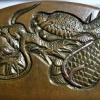


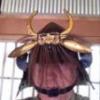
























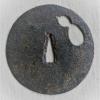
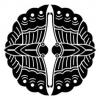






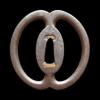


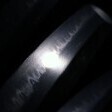
.thumb.jpg.3a530d33bc1c0e3e6efe45df403b88a7.jpg)
.thumb.jpg.27b33df98103b1e3e9367ac4646e1b95.jpg)

.thumb.jpg.a19a09a1f0cb0fc9127b08179fb76b4c.jpg)
.thumb.jpg.1081d954cc28ac22b15bc82e48b531eb.jpg)
.thumb.jpg.a937d190ff6ea7b59cb86309ae292a42.jpg)



